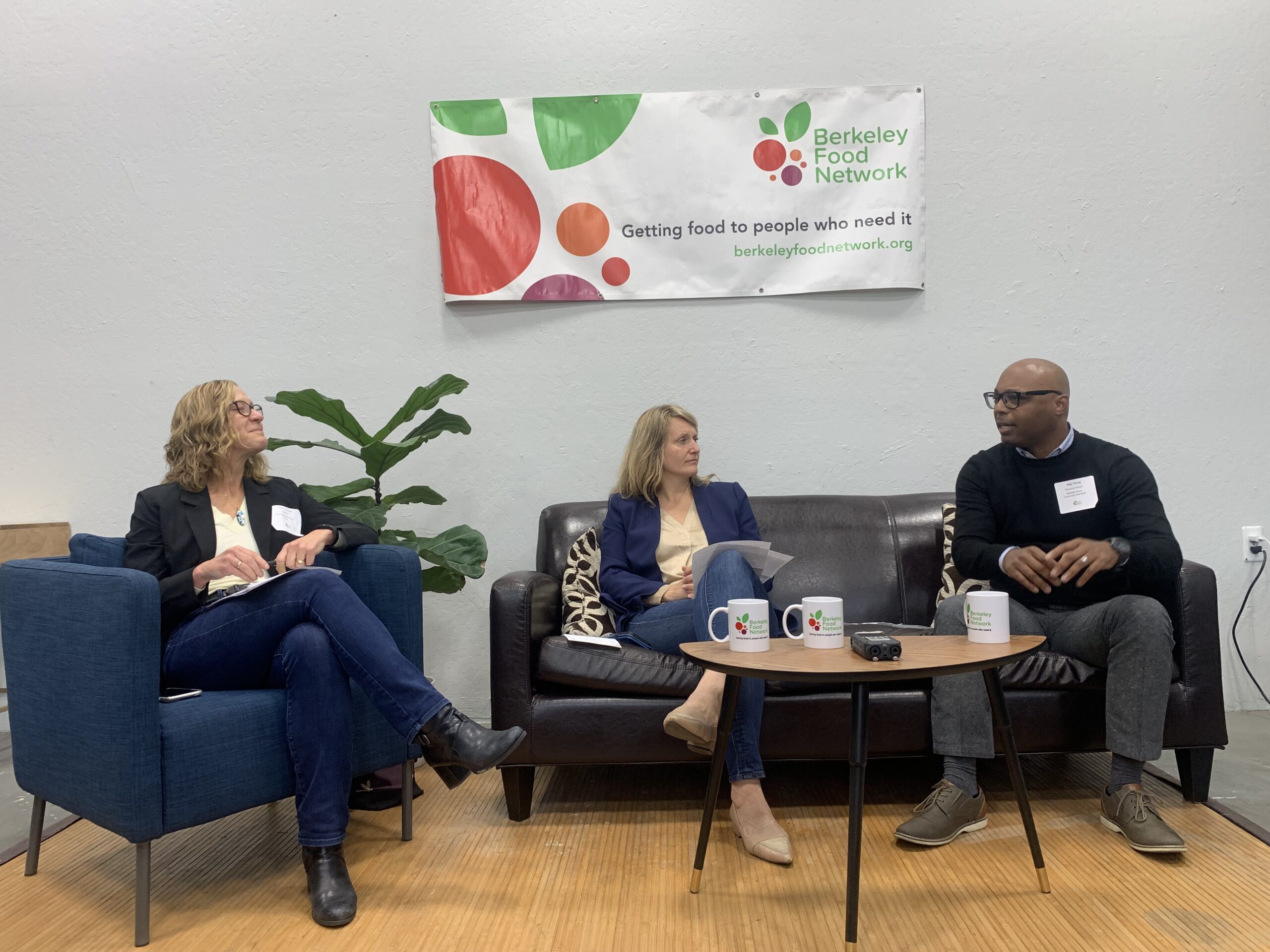Last month, Berkeley Food Network hosted a private partner conversation in our Community Room to discuss the complexities of food insecurity, the role of food banks, and the anti-hunger and anti-poverty policy landscape over the last few years.
Hilary Hoynes, Professor of Public Policy and Economics at UC Berkeley Goldman School of Public Policy, facilitated the talk between California Assemblymember Buffy Wicks and Alameda County Community Food Bank Executive Director Regi Young. They discussed how the immediacy and accessibility of rental, emergency housing, food assistance, and other basic needs services created a blueprint for lasting change in food insecurity.
Throughout the pandemic, those responding to basic needs witnessed first-hand how community organizations and state and federal governments could effectively provide a hand-up for the most vulnerable families. It showed us what is possible with creative partnerships and programs that prioritize immediate and low-barrier services.
The Advanced Child Tax Credit cut child poverty in half, Project Homekey enabled local governments to place unhoused community members in homes rapidly, and the CalFood program allocated funding for food banks to meet rising food insecurity by bulking up purchasing while strengthening regional food systems.
The conversation between Hoynes, Wicks, and Young explored how these innovative programs provided a roadmap for designing basic needs services for maximum and transformative impact. So how do we carry these lessons into a post-COVID world to ensure our communities thrive?
Our food-insecure communities are still struggling. Like Berkeley Food Network, Alameda County Community Food Bank is witnessing a sustained need for their services, indicating that many people have been left in the lurch of the Benefits Cliff.
“This is a signal that we are absolutely not in the place that we want to be, or the places that I think people anticipate we should be at this point,” said Young.
Young suggested this ongoing crisis cannot be addressed without looking at greater economic conditions.
“Food, gas, housing, all of these things are relevant when we talk about food insecurity,” said Young. “The reality is that if I go to a pantry, and I talk to an individual about what brought them there, they rarely say because of food. They talk about employment, and they talk about housing, they talk about workforce development.”
These are issues Young refers to as intersectional; their solutions are inextricably linked together. The pandemic illuminated how a provision of accessible, comprehensive, and rapid basic needs services can provide the most sustainable long-term stability in so many areas of a family’s life.
Assemblymember Wicks agreed, recapping the innovative partnerships and policies her team spearheaded as a response to the pandemic, calling for the permanence of programs like rental assistance and the Expanded Child Tax Credit. She expressed that creative partnerships between corporate and business entities and social service organizations are also critical to buttressing the safety net. One example is her proposed Alameda County pilot program that would fund restaurant meals and deliver them via social workers to the unhoused community, ensuring greater food security and supporting a sector of businesses that were hit hard during the pandemic.
Wicks cited that the biggest threat this year to innovative and comprehensive basic needs programs is the state budget deficit of $68 billion. While she expressed cautious optimism that food banks will have the funds they need, she exuded hope that through collaboration and organizing we can make the largest impact.
“We are pinching pennies now,” said Wicks. “We are going to just have to go in eyes wide open… I’m always looking for: what are other things that we can do? What are creative solutions that we can have? What are creative partners we can bring in that can help us while we’re not able to fund at the levels that we have been able to?”
It starts with looking at what worked in our collective pandemic response and creating a shared vision for what a food-secure community looks like.
“I think there’s a lot to be hopeful about,” said Young. “The fact that we have universal school meals here in this state is incredible. This state has the ability to be able to try things, do things, and set an example for the rest of the country.”
Young continued, “For me, it takes all of us, because the conditions that lead to food insecurity cannot be solved by food alone, it has to take employment, it has to take housing, has to take all of these other people who have a vested interest in the success of our community on an ongoing basis.”
